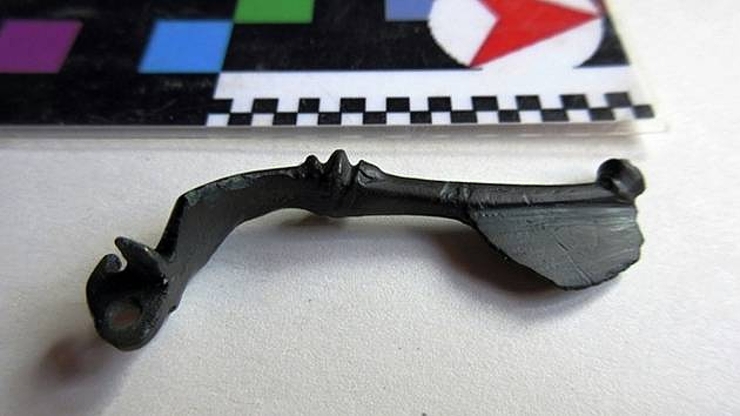Nějak nerozumím tomu, proč spona nalezená v katastru Velkého Meziříčí putovala do 150km vzdáleného muzea ve Vsetíně.
20.11.2017 Buckle from the first century
Categories: Finds and rescue research in the Czech Republic , Calendar

A small but very rare depot was discovered four years ago by archaeologists in the Velké Meziříčí cadastre. They came across a metal clasp from the older Roman period. It was used to fasten clothes. The object is in the collection of the Museum of the Wallachia Region.
The found buckle is complemented by three bronze rings. Archaeologists discovered this rare object in Velký Meziříčí. It worked on a principle that resembles today's brooches or safety pins. From the typological point of view, it belongs to the Noric-Pannonian distinctively articulated clasps.
"We already have several clasps from the Early Iron Age in our museum - they come from the sites of the Púchov culture, and as already mentioned, this is the first example from the Roman period. The current find is referred to as the Amlgren 67/68 type buckle, which can be dated to the first century AD," commented Samuel Španiel, archaeologist at the Museum of the Wallachia Region.
The metal buckle was accompanied by three cast bronze rings. These were a common find, especially in the more northern parts of Europe, and could have served a variety of purposes. They were mainly belt elements. Matching diameters were also incorporated into suits, for example in fire-making sets.
"Because buckles quickly fell into fashion, they are one of the most important elements for archaeology in the creation of chronological and periodization systems. "Our territory does not seem to have been settled, but because of its transit position between the Roman south, the Marobudite Empire in the Bohemian Basin and the BalticGermans, it was an important trade route, as evidenced by the finds of Roman coins from Loučka and Zubří," Španihel added.
Archaeologists also found rare objects from the Roman legions in 2010, near Pasohlávky in the Breclav region. The artefacts were found at the bottom of the study. In addition to the buckle, there were also pieces of armour or metal and clay objects.
According to experts, these artefacts suggest a large-scale collaboration between the Marcomanni and a nearby Roman military camp. They traded with each other and the legendary Amber Road, which carried amber from the Baltic to the Empire, was guarded by Roman legions.
"The objects found prove that the Germans used Roman objects as raw material, which they essentially recycled," said archaeologist Balázs Komoróczy.
Sources: www.denik.cz, www.muzeumvalassko.cz, https://ct24.ceskatelevize.cz/
The article is included in categories:






